By Dan Weisz
Crested Caracaras are an interesting southern Arizona raptor. They are in the falcon family but look nothing like the other six falcon species in the US. They can be found, especially at this time of year, in agricultural areas in southern and south-central Arizona. Standing about two feet tall, Crested Caracaras are very recognizable birds.
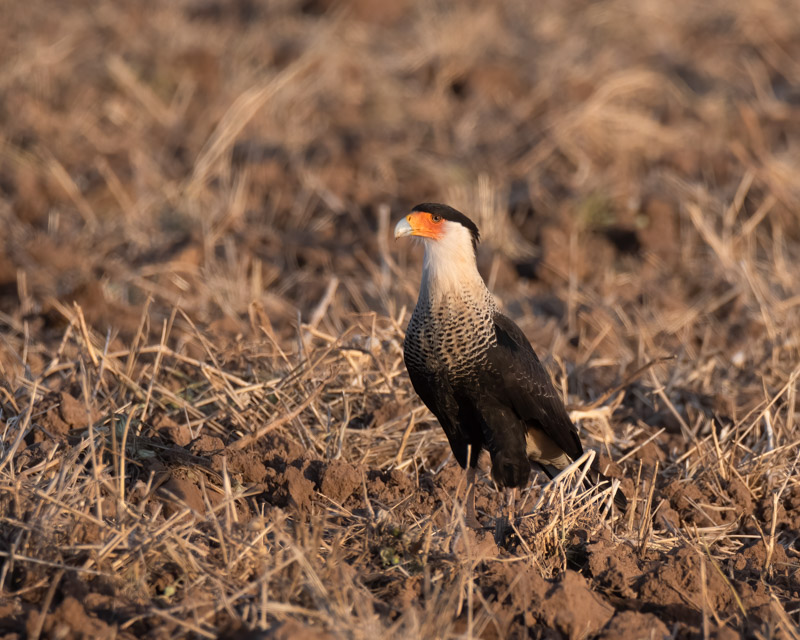
Crested Caracaras are attracted to farm fields particularly when the farmers are working the fields. The tractors plow or disc the field, digging up invertebrates and possibly maiming or killing vertebrates including mice, rodents, and lizards. Effectively, the tractors dig up food for the Caracaras. I spent some time in farmland in Avra Valley this November watching a tractor dig up old cotton fields while dozens of Caracaras walked alongside the tractors.
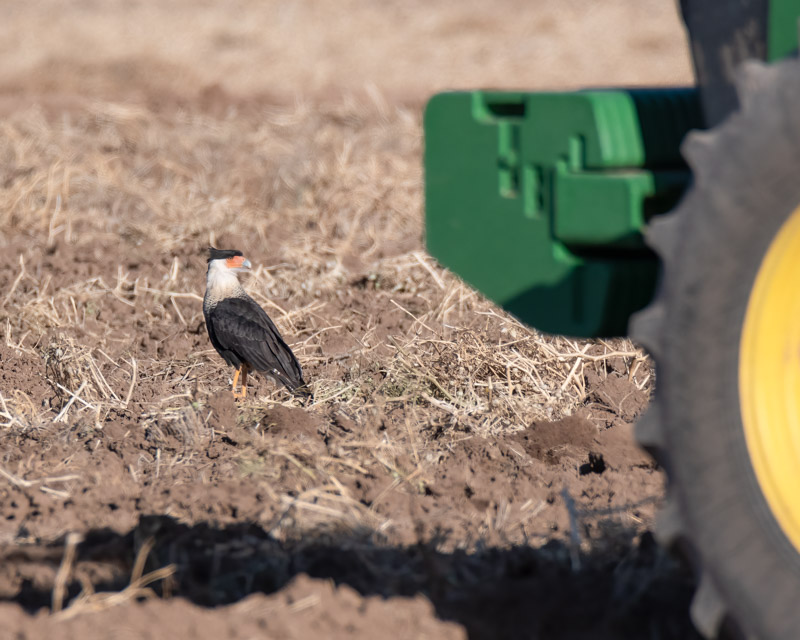
The Crested Caracaras understood what the tractors were doing and were often incredibly close to the massive equipment. Among the dust, noise and turmoil, the Caracaras knew it was worth it to find an easy meal.
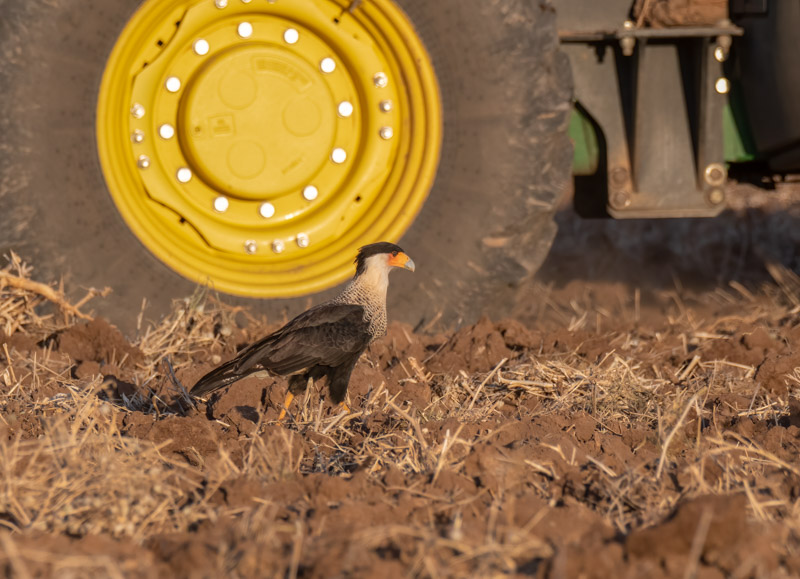
Adult Caracaras have white feathers on their necks, tails, and on the ends of their wings. They have bare skin between their pale blue bill and their eyes. That bare skin can change colors when the birds get excited for any number of reasons. The blood in their facial skin may drain or may rush to the surface depending on the situation. That facial skin will change colors to reflect the mood of the bird.
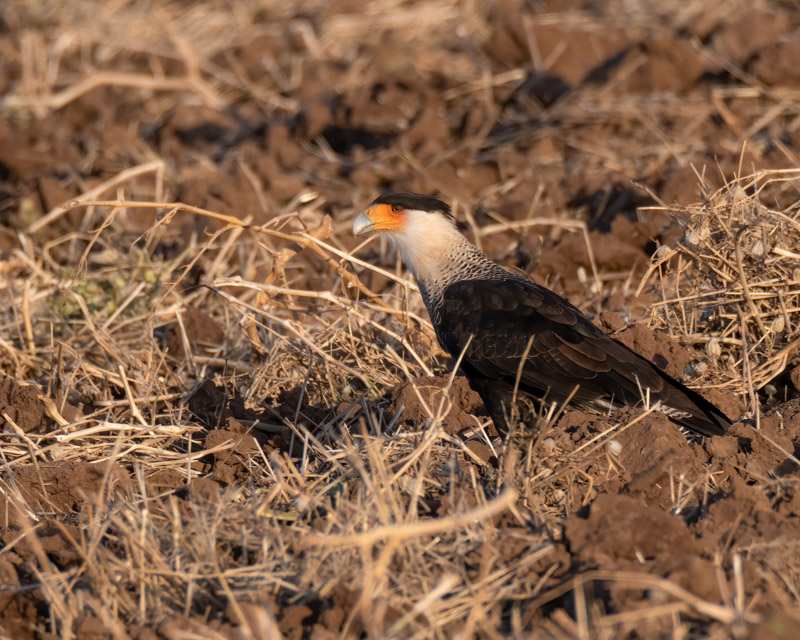
One amazing bird we saw was the adult Crested Caracara in the photo below. It takes Crested Caracaras several years to develop their adult plumage, which this bird has. If you look closely, you can see that the bird does not have a left foot or lower leg. And yet, this is a healthy and active Crested Caracara. We can’t know what happened to it or when it happened but this Caracara was feeding in the field, moving around easily, and able to manage for years even though it only had one full foot!!
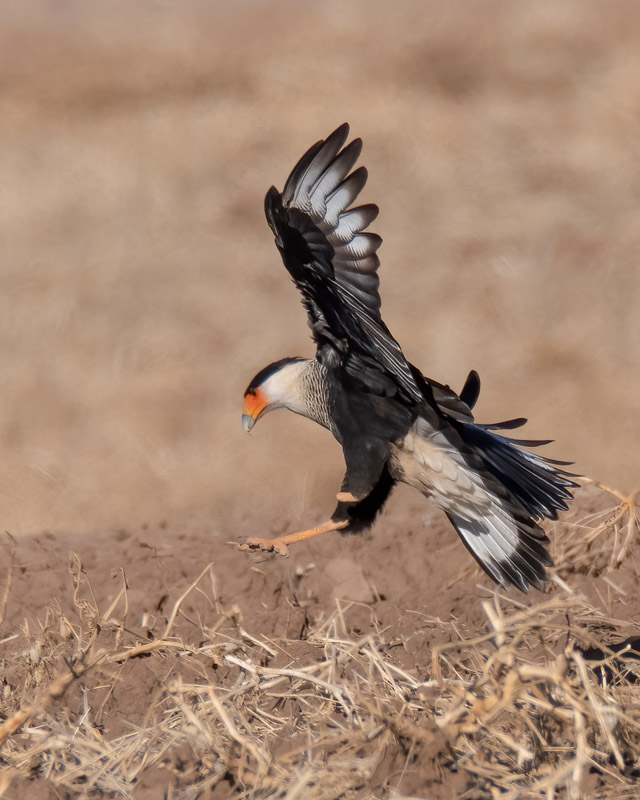
There were younger Crested Caracaras mixed in with the full adults. The bird below has no white feathering on its neck and still has a brownish look to its dark feathers. It can take several years for a Crested Caracara to achieve its adult plumage. Because there is some white on the wings, this bird may be anywhere from one to three years old. This bird happened to find a mouse in the tractor path and flew off with its prize to avoid the other Caracaras.
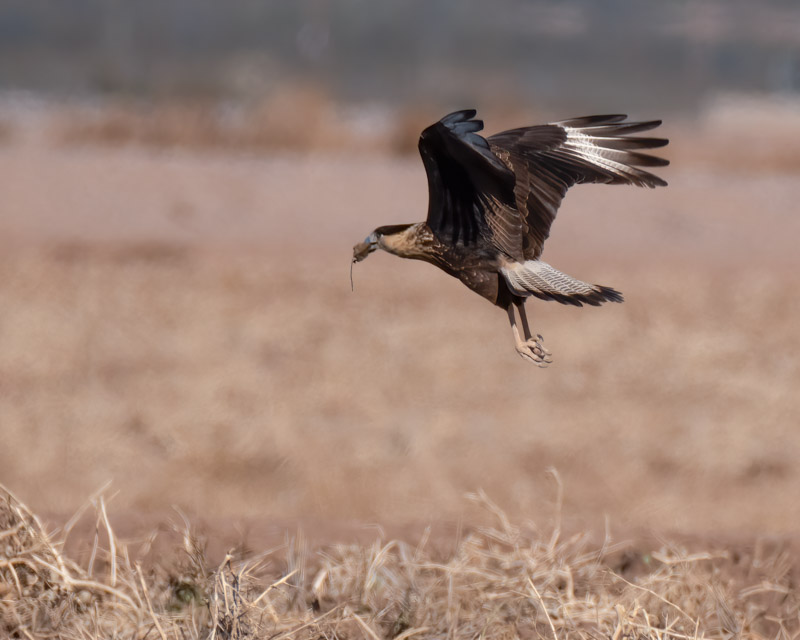
As it continued flying, you can see the mouse dangling from its bill
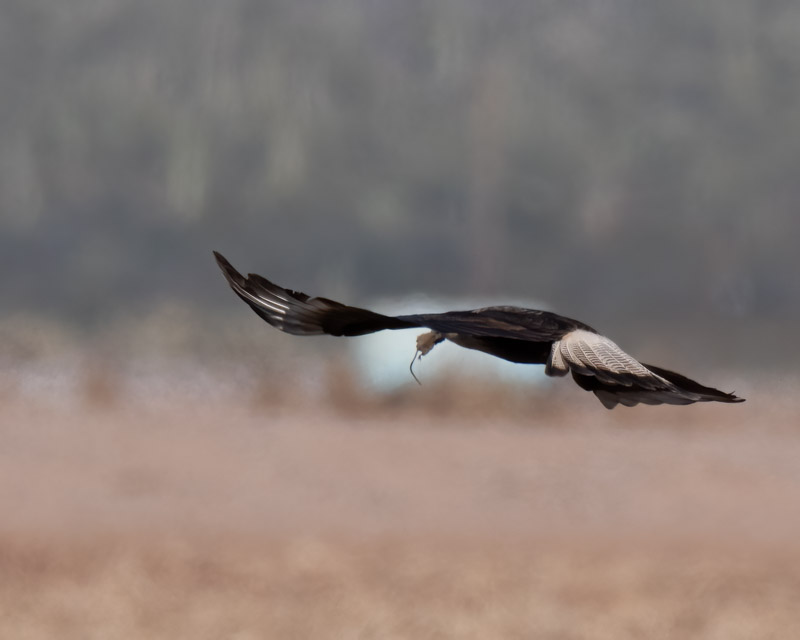
Two of the Crested Caracaras took to the air. As they circled the field, they seemed to be flying in unison. The upper Crested Caracara is younger than the one flying closer to the ground in this photo. You can see the difference in the dark feathers and in the neck feathers. Also, the younger Crested Caracara does not have orange facial skin yet.
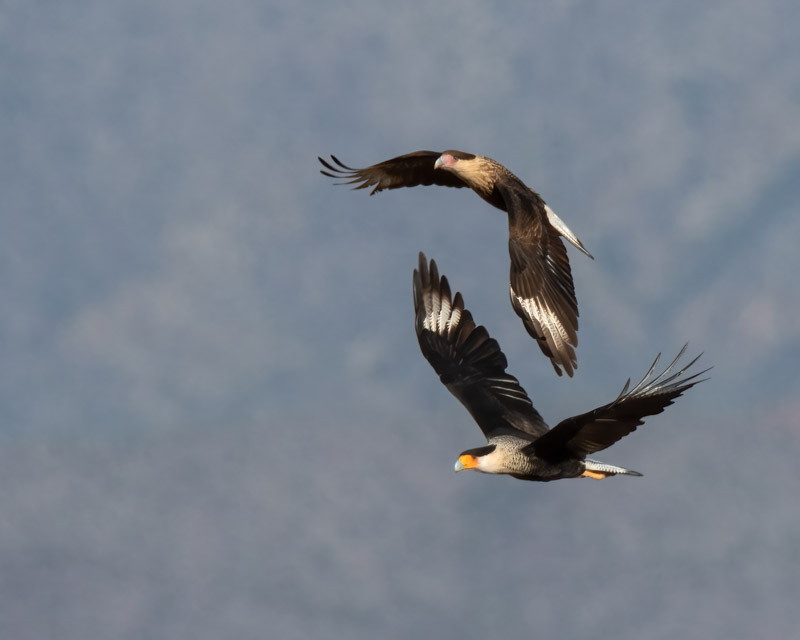
Behind the pair of Crested Caracaras is the western side of the Tucson Mountains.
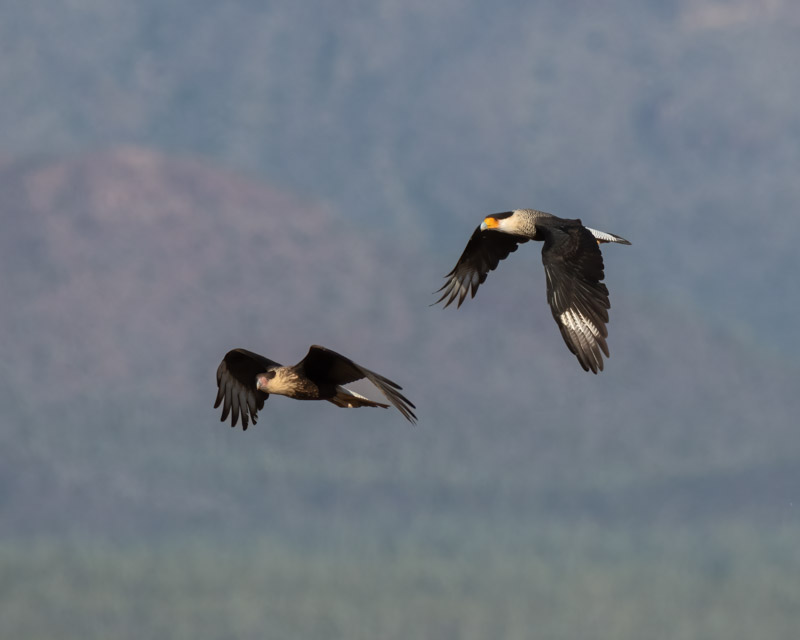
Crested Caracaras are very smart birds. They are also very aggressive when they need to be. You can see that the bird below on the left had discovered a rodent that the tractor uncovered, but the bird on the right wanted that rodent for itself. I was not able to take the most clear photo due to motion, distance and heat waves in the air. Still, I thought that the action in the photo was interesting despite some of the technical issues.
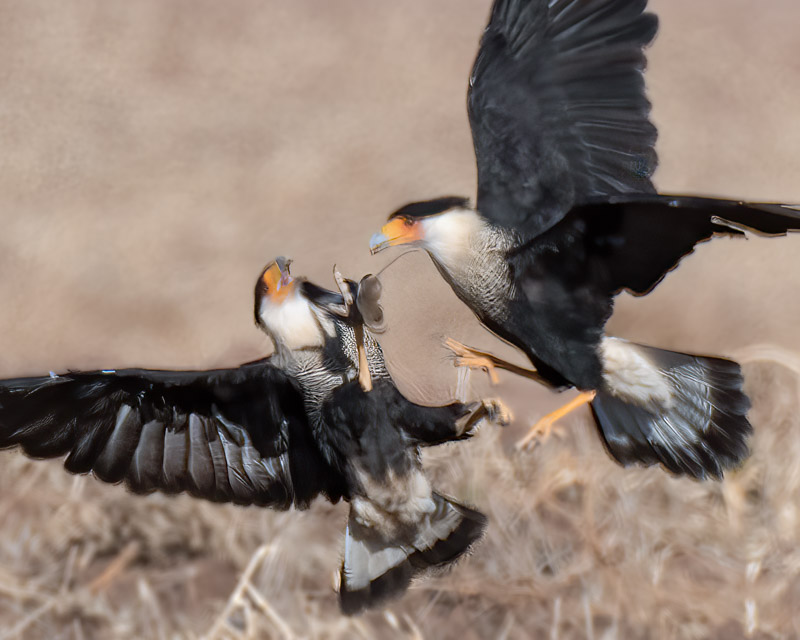
A few minutes later another argument ensued between two other Caracaras. These two birds are having quite the discussion. The tractor had just passed by, leaving the two birds in a cloud of dust. The bird on the left is obviously less dominant than the caracara on the right.
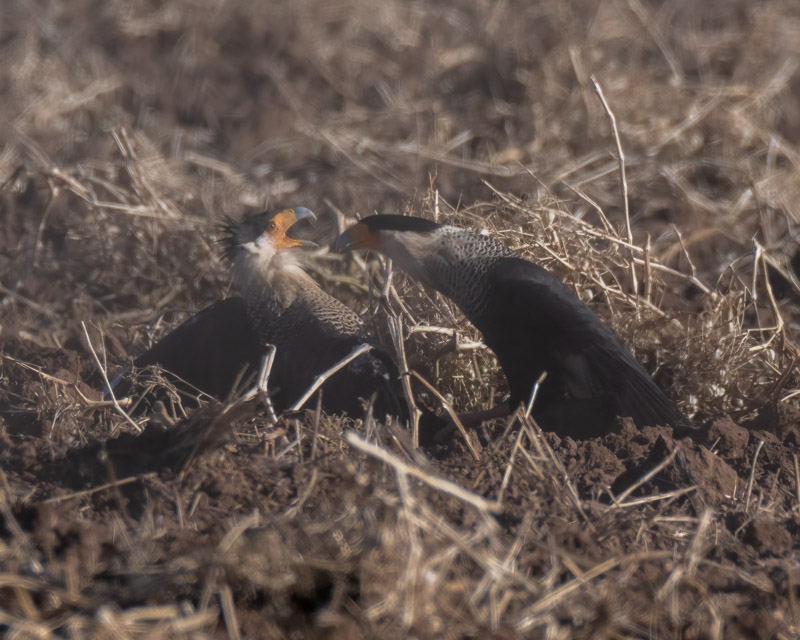
Eight seconds later and the dust has cleared but the argument continued. When the bird on the right threw its head back, it made the sound that gave the Caracaras their name. The allaboutbirds web site says “Crested Caracaras are mostly silent, but when disturbed, they occasionally make a hollow rattling that sounds similar to running a stick along a fence. They throw their heads back, lifting their bills to the sky while giving a rattle.”
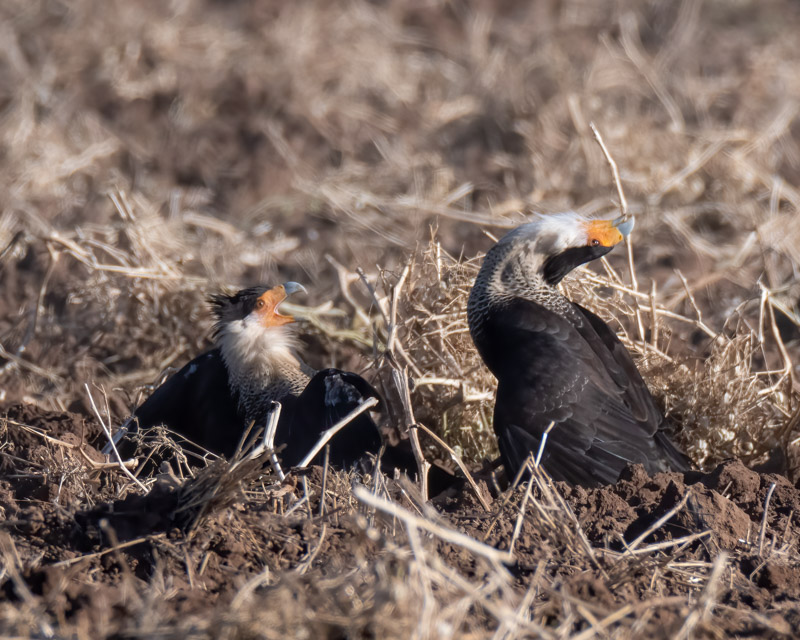
My final photo, for inspiration, is that one-legged Crested Caracara flying away. He must be one smart and tough bird, to survive in the wild, to meet all of nature’s challenges, and to compete for resources with all of the other Caracaras.
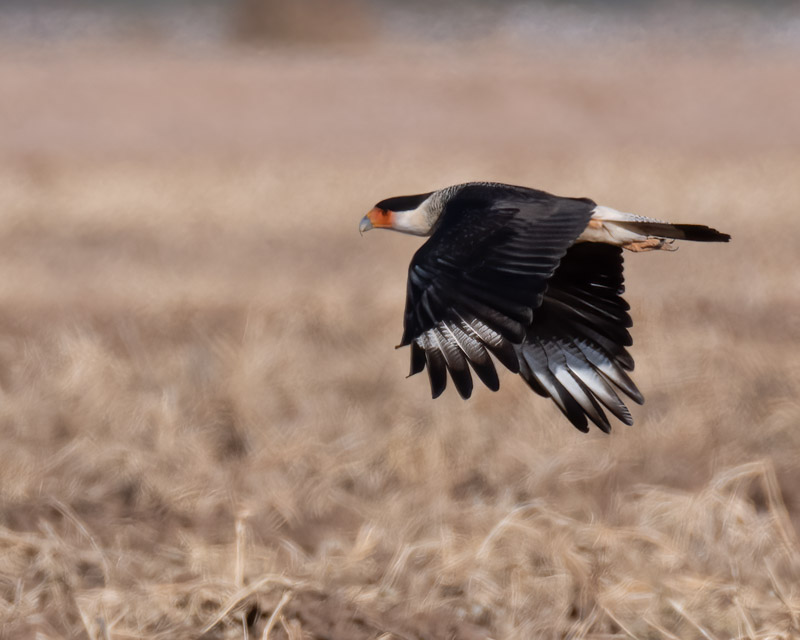
Meanwhile, the tractor continued working the fields and the Caracaras continued their vigil, waiting patiently for dinner to be served.

I returned to that farm just last weekend. All of the hundreds of acres of cotton had been harvested and the fields disked. They will wait to be planted again in a little while, likely with winter wheat- the winter crop on the farm last winter. The Caracaras should return when that occurs.
